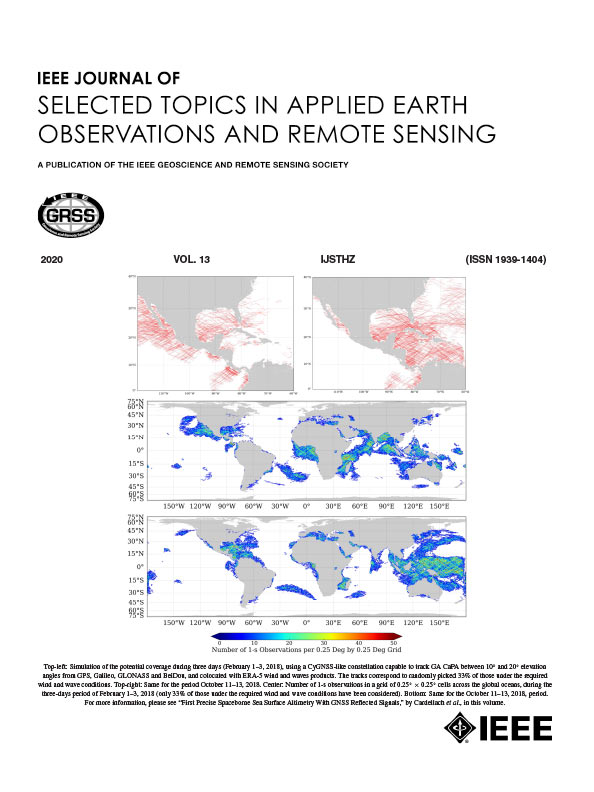基于自适应微调迁移学习方法和自注意机制的叶绿素-A浓度反演模型
IF 5.3
2区 地球科学
Q1 ENGINEERING, ELECTRICAL & ELECTRONIC
IEEE Journal of Selected Topics in Applied Earth Observations and Remote Sensing
Pub Date : 2025-09-18
DOI:10.1109/JSTARS.2025.3611596
引用次数: 0
摘要
叶绿素-a (Chl-a)是评价水质和水生生态系统的重要物质。传统的原位监测受到站点稀疏和样本有限的影响,机器学习在这种条件下经常过拟合。迁移学习通过利用预训练的知识提供了一种解决方案,但是领域差异仍然是主要的挑战。为了改善少镜头设置下的跨域Chl-a反演,本研究提出了GSA-ICPO- former,该方法集成了Transformer架构、改进的冠猪优化器(ICPO)和基于梯度灵敏度的自适应(GSA)微调方法。Transformer通过自我关注捕获全局谱依赖;ICPO增强了超参数优化,防止过拟合;GSA调整模型参数,使源域知识适应目标域特征。经过ICPO优化后,模型源域的$R^{2}$从0.73提高到0.84,RMSE从2.39降低到1.86 $\mu$g/L,分别提高了15.07%和22.18%。在目标域,与ICPO-Former相比,GSA-ICPO-Former将$R^{2}$从0.54提高到0.79,RMSE降低了32.97%,显示出更强的跨域适应性。烧蚀研究证实了每个优化组件的有效性。该模型还在不同的沿海环境中表现出稳健的性能,包括近岸(唐岛湾)和远海(荣城)地区。在有限的样品中准确地跟踪了Chl-a的分布,在动态藻华监测中显示出良好的应用前景。总体而言,该模型有效地弥补了区域差距,并在低样本、跨区域情景下保持了较高的预测精度,为基于卫星的沿海水质监测提供了实用工具。本文章由计算机程序翻译,如有差异,请以英文原文为准。
A Chlorophyll-a Concentration Inversion Model Based on Adaptive Fine-Tuning Transfer Learning Method and Self-Attention Mechanism
Chlorophyll-a (Chl-a) is essential for assessing water quality and aquatic ecosystems. Traditional in situ monitoring suffers from sparse stations and limited samples, and machine learning often overfits under such conditions. Transfer learning offers a solution by leveraging pretrained knowledge, but domain discrepancies remain a major challenge. To improve cross-domain Chl-a inversion under few-shot settings, this study proposes GSA-ICPO-Former, which integrates a Transformer architecture, an improved crested porcupine optimizer (ICPO), and a gradient sensitivity-based adaptive (GSA) fine-tuning method. The Transformer captures global spectral dependencies through self-attention; ICPO enhances hyperparameter optimization and prevents overfitting; GSA adjusts model parameters to adapt source-domain knowledge to target-domain features. After ICPO optimization, the model’s $R^{2}$ $\mu$ $R^{2}$
求助全文
通过发布文献求助,成功后即可免费获取论文全文。
去求助
来源期刊
CiteScore
9.30
自引率
10.90%
发文量
563
审稿时长
4.7 months
期刊介绍:
The IEEE Journal of Selected Topics in Applied Earth Observations and Remote Sensing addresses the growing field of applications in Earth observations and remote sensing, and also provides a venue for the rapidly expanding special issues that are being sponsored by the IEEE Geosciences and Remote Sensing Society. The journal draws upon the experience of the highly successful “IEEE Transactions on Geoscience and Remote Sensing” and provide a complementary medium for the wide range of topics in applied earth observations. The ‘Applications’ areas encompasses the societal benefit areas of the Global Earth Observations Systems of Systems (GEOSS) program. Through deliberations over two years, ministers from 50 countries agreed to identify nine areas where Earth observation could positively impact the quality of life and health of their respective countries. Some of these are areas not traditionally addressed in the IEEE context. These include biodiversity, health and climate. Yet it is the skill sets of IEEE members, in areas such as observations, communications, computers, signal processing, standards and ocean engineering, that form the technical underpinnings of GEOSS. Thus, the Journal attracts a broad range of interests that serves both present members in new ways and expands the IEEE visibility into new areas.

 求助内容:
求助内容: 应助结果提醒方式:
应助结果提醒方式:


